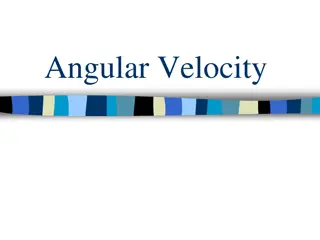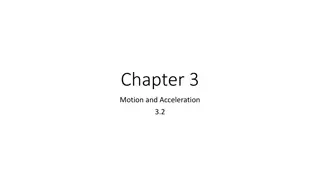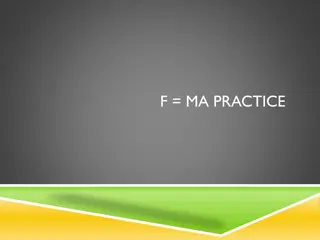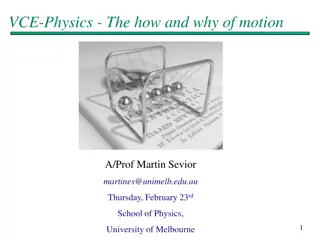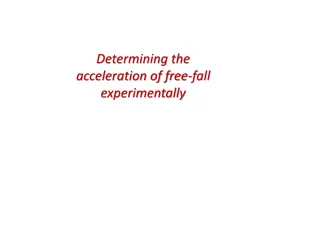Understanding Acceleration in Motion: A Visual Guide
Acceleration plays a crucial role in motion, whether it's a car starting at a green light or a ball bouncing. This guide explains the concept of acceleration, its types (positive, negative, zero), how to calculate it, and provides examples illustrating its application in real-life scenarios.
Download Presentation

Please find below an Image/Link to download the presentation.
The content on the website is provided AS IS for your information and personal use only. It may not be sold, licensed, or shared on other websites without obtaining consent from the author. Download presentation by click this link. If you encounter any issues during the download, it is possible that the publisher has removed the file from their server.
E N D
Presentation Transcript
Chapter 3 Motion and Acceleration 3.2
3.2 Acceleration Think about a car at a stop light When the light turns green, the car starts moving and the car s velocity increased The car began accelerating Acceleration is the change in velocity divided by the time it took the change to occur
3.2 Acceleration Acceleration can be positive, negative, or zero depending on whether the object is speeding up, slowing down, or remaining at a constant speed Because the velocity/speed of this object is increasing over time, this means there is a positive acceleration. Ex: ball coming down from a bounce, a car when a traffic light turns green, coming down hill on a bike
3.2 Acceleration Acceleration can be positive, negative, or zero depending on whether the object is speeding up, slowing down, or remaining at a constant speed This represents an object that has a constant speed. It is not speeding up or slowing down, so it has zero acceleration. Ex: a car that is on the highway doing a constant speed
3.2 Acceleration Acceleration can be positive, negative, or zero depending on whether the object is speeding up, slowing down, or remaining at a constant speed Because the velocity/speed of this object is decreasing over time, this means there is a negative acceleration. Ex: riding your bike uphill, ball bouncing upward (gravity is slowing it down as it travels up)
3.1 Acceleration Calculating Acceleration vf = final velocity; vi = inititial velocity tf = final time; ti = initial time Units are in meters per second (m/s ) If an object begins acceleration from rest or a standstill, its initial time is 0 If you get a negative value for acceleration, it means the object is slowing down
3.1 Acceleration Example A jet airliner starts at rest and moves down the runway in a straight line. After accelerating for 20 seconds, it reaches a speed of 80 meters per second. Calculate the jet s average acceleration. Is it positive or negative? What does that mean? vf = final velocity = vi = initial velocity = tf = final time = ti = initial time =
3.1 Acceleration I know what you re thinking... this is SUPER interesting and all Ms. T., but what does this have to do with anything? If you like the thrill of riding roller coasters, you can thank physics, especially acceleration, for that The steep hills and inversion loops provide large acceleration towards the ground due to gravity When you go around a sharp turn, acceleration is also increasing that s why you feel that push against the side of the car!




